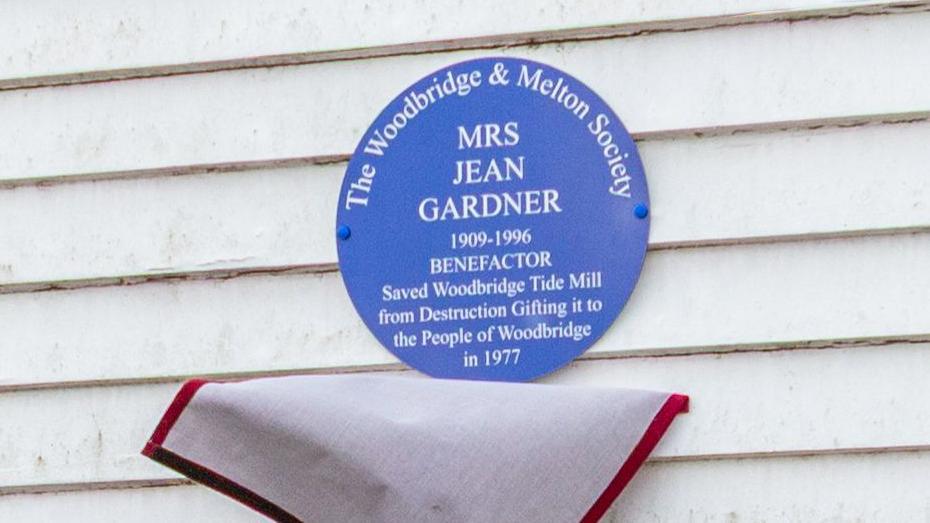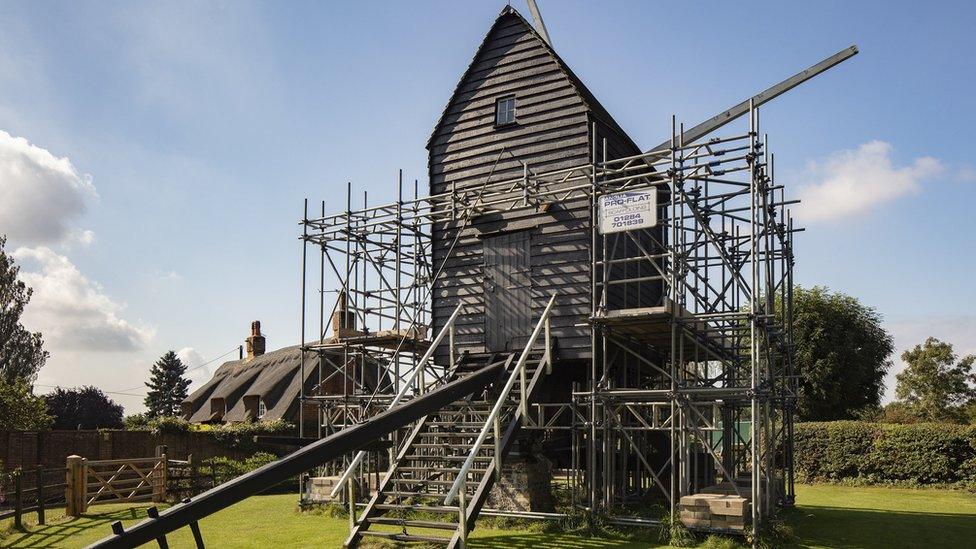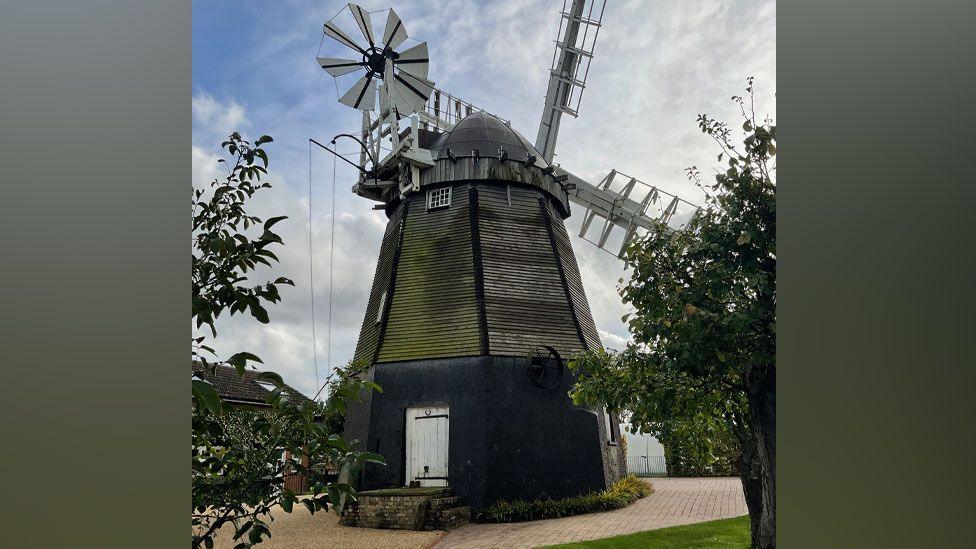Blue plaque for Woodbridge Tide Mill benefactor

The building is one of the most recognised landmarks in east Suffolk
- Published
The woman credited with saving one of the last working tide mills in the country has been honoured with a blue plaque.
Jean Gardner bought the Grade I listed Tide Mill in Woodbridge, Suffolk for £7,300 at an auction in May 1968 after hearing a lecture on its plight by local historian, Norman Scarfe. She then oversaw its restoration before gifting it to the town in 1977.
Four generations of Mrs Gardner's extended family were at the ceremony for the unveiling alongside guests from the community.
The chair of the Woodbridge Tide Mill Museum, John Carrington, said "We are grateful to the work of the Woodbridge and Melton Society in securing this lasting tribute to the lady that saved the Mill".

The plaque was unveiled by one of Mrs Gardner's great-great grandsons, George
The earliest record of a tide mill on the River Deben site dates back to 1170.
The present mill was built on the site in 1793 and didn't close until 1957. It is now one of the only working tide mills in the UK and still harnesses the River Deben's tides to produce stoneground flour.
Mr Carrington said it had become a tourist attraction.
"It is one of the most photographed, painted and drawn buildings in the East of England, and attracts the attention and interest of mill enthusiasts worldwide," he said.
Get in touch
Do you have a story suggestion for Suffolk?
Follow Suffolk news on BBC Sounds, Facebook, external, Instagram, external and X, external.
Related topics
Other stories like this
- Published12 November 2024

- Published3 June

- Published7 April 2022

- Published24 May
